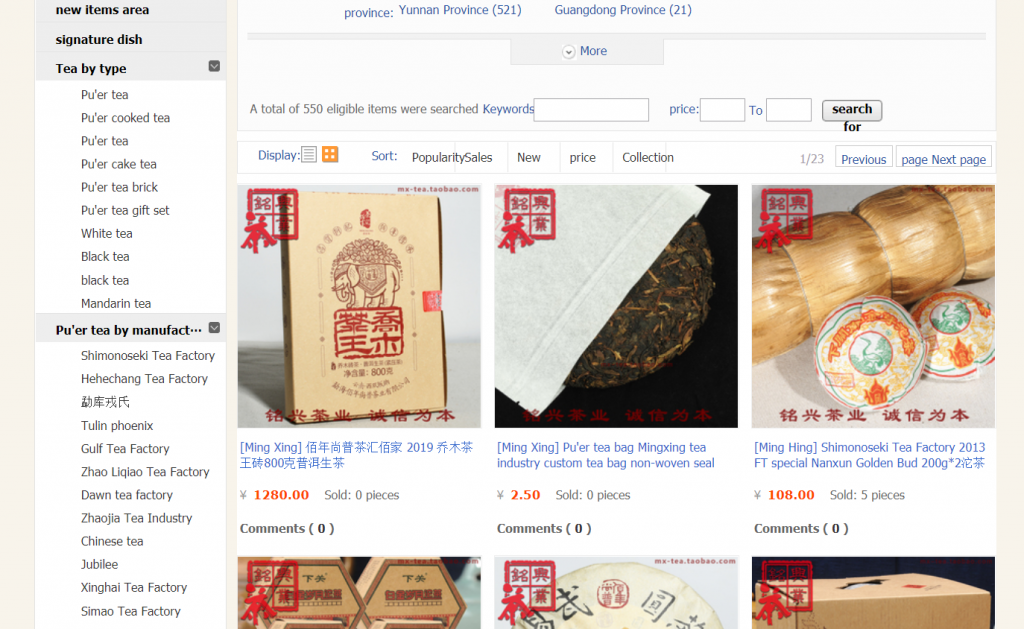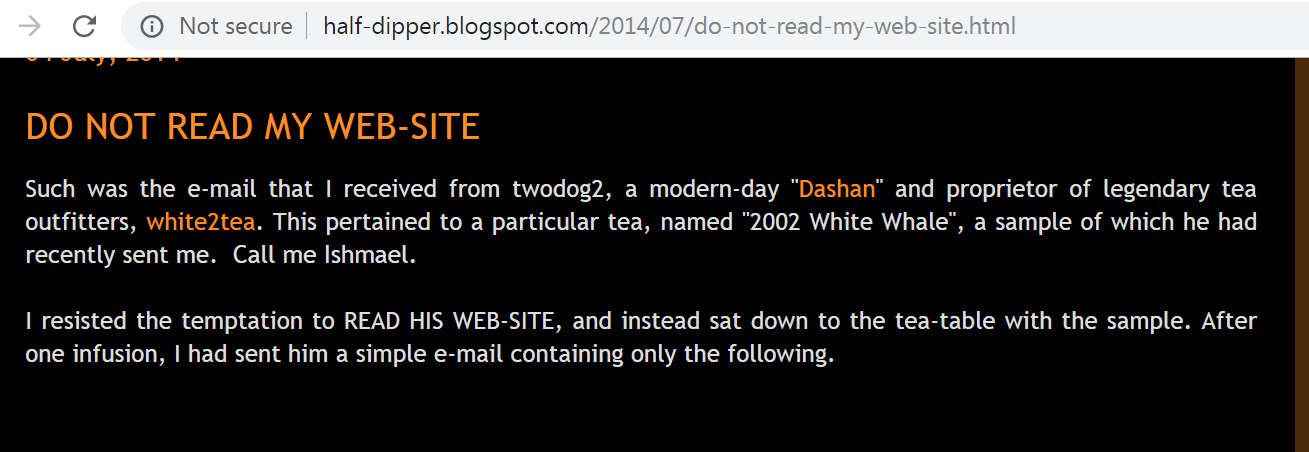The common wisdom around pu’erh prices is that they rise over time. This is of course true if we zoom out far enough. If you were to take snapchats of most pu’erh production every few years, the trend would be quite obvious even with a downturn or two (i.e. 2007/2008). Not everything rises equally though. One interesting point of a consideration as a consumer is when and why vendors tend to adjust price. Thanks to Matt for the idea.

Typical Price Bumps Happen Around Chinese New Year/Spring Harvest
This is the most common time for pu’erh to rise in price and when eastern facing vendors make their yearly adjustments. In this time of year, vendors may also get an early idea of what next year’s material will cost which can inform decisions of how much to raise their tea still in stock. For instance, if a vendor sold a 2018 Wangong for around $0.25/g, and found out that the maocha prices from the same farmer will cause a new production (a 2019 Wangong) to cost $0.35/g, they may choose to raise the 2018 to over $0.35/g.
On the western vendor front, this is also the time where we see the most common price adjustments. W2T sometimes emails and announces they’ll be adjusting prices and gives a few hints as to what’s rising. But this isn’t necessarily the norm.. Most vendors just raise them. Yunnan Sourcing raises their prices by around 15-20% per year on average, typically around March. I have virtually no sympathy for the annual yearly whine from people have been drinking for a few years over YS raising their prices, as if it’s an unexpected affront. Scott’s prices are very predictable. Plan ahead!
I think this regular price adjustment is most common in vendors selling freshly pressed young tea each year. The prolific, more active vendors like Yunnan Sourcing and W2T are pretty likely to raise their prices annually, whereas more part-timers that aren’t full time tea vendors may or may not follow through on a price bump every year.
- I’ve also seen Yunnan Sourcing adjust their autumn tea right before autumn, basically the mirror of spring price hikes and spring harvest.
- Trying to predict the exact ups and downs of big factories (see Dayi) special productions is a headache. Generally most tea prices go up over time, but there’s a greater deal of volatility there, different from most other non-Dayi tea productions sold.
The Selection After 4-5 Years is Sparser & More Expensive
I took a subset of the data of pu’erh prices at conception, and added their current prices as of (5/31/2019), comparing them to their original price. The teas chosen were 2014-2015. I wanted to pick from a couple years where a reasonable amount of vendors were making tea, but also give it enough time for them to adjust prices. If vendors are choosing to adjust their prices yearly, this gives them 4-5 adjustments for this data subset.
2014 & 2015 Spring Products by Western Vendors
| # Products 2014 | # Products Still Available 2014 | Price Rise 2014 Harvest | # Products 2015 | # Products Still Available 2015 | Price Rise 2015 Harvest | |
| White2Tea | 6 | 0 | – | 9 | 3 | 33.80% |
| Crimson Lotus Tea | 10 | 0 | – | 4 | 0 | – |
| Tea Urchin | 11 | 9 | 1.12% | 8 | 8 | 10.34% |
| Yunnan Sourcing | 16 | 16 | 118.34% | 16 | 16 | 73.94% |
| Chawangshop | 4 | 3 | 58.78% | 4 | 2 | 83.44% |
Many vendors productions sell out. We don’t really know what Crimson Lotus would do if they still had stock four years later. Yunnan Sourcing prices (who produces several levels of quantity more) have unsurprisingly risen the most. But again… In a 100% predictable fashion. We know that they raise their prices by around 15-20% per year. 15% prices rises across 4 years ends up being ~75%-110% price increase. Put across 5 years it is ~100-150%. And this is exactly what the data reflects, for essentially every single tea. The other vendor price adjustments have been more variable, anywhere between nothing to 80%.
- The less-active but still selling tea vendors may offer some of the better deals for tea that is a few years old because they aren’t raising the prices as regularly. I think Tea Urchin and Hou de Asian fit this category, and even Yangqing Hao to a different but still relevant extent.
- One related point I’ve made many times is the price of tea at conception has also risen a ton. So even though pu’erh prices tend to rise over time, if that rise is slow enough compared to maocha prices rising they can still be better to buy than young tea.
Restocking & “Blogger Effect”
When a vendor sells out of a tea that is not their own and restocks it, sometimes the source’s price has changed. The vendor will then have to choose whether or not to buy the tea at the higher price. This can explain why that 2005 Changtai that originally cost $30 now costs $75. If the tea is selling well and the vendor needs to buy another jian at a higher price, it only makes sense that it costs more for the consumer too. This can also have the unfortunate effect of creating fairly rapid price hikes. If a tea is hot at the source it can rise by a lot more than just 15-20% in a year.
One effect that has been argued in the teasphere, is the blogger effect. The idea is quite simple.. A blogger reviews a tea and then the price rises immediately, due to a (greedy) vendor sensing more demand. I’m skeptical of this. I think bloggers have an overall small effect on teas selling out and most of this can be explained by just the vendor needing to restock. In my opinion it is closer to correlation rather than an actual causal relationship. A popular tea is more likely to be reviewed, but also more likely to be restocked independent of a review. There is the caveat that when someone does give a rave review that sells a ton of tea (see below), restocks become necessary increasing the likelihood of a price bump. This effect is a little different from the purported blogger effect, which under the definitions I’ve seen requires the vendor raise the tea price before they’ve sold a significant amount.

When is the Best Time to Buy?
I’m not sure that there is a hard rule, but given the patterns above you can probably figure out intuitively based off your own situation. If you know what you want from Yunnan Sourcing, getting it in the first year before any price hikes is optimal. It’s also a decent idea to duck in an order before the Chinese New Year and the corresponding price hikes if you plan to buy anyways. You won’t be able to order vendor’s new tea, but that’s the tradeoff you’re forced to make. November is also a good time. The biggest sale for many of the western facing vendors is Black Friday and/or Cyber Monday in November. The biggest Chinese sale (taobao) is singles day (11/11) also in November.

Leave a Reply to MattCha Cancel reply